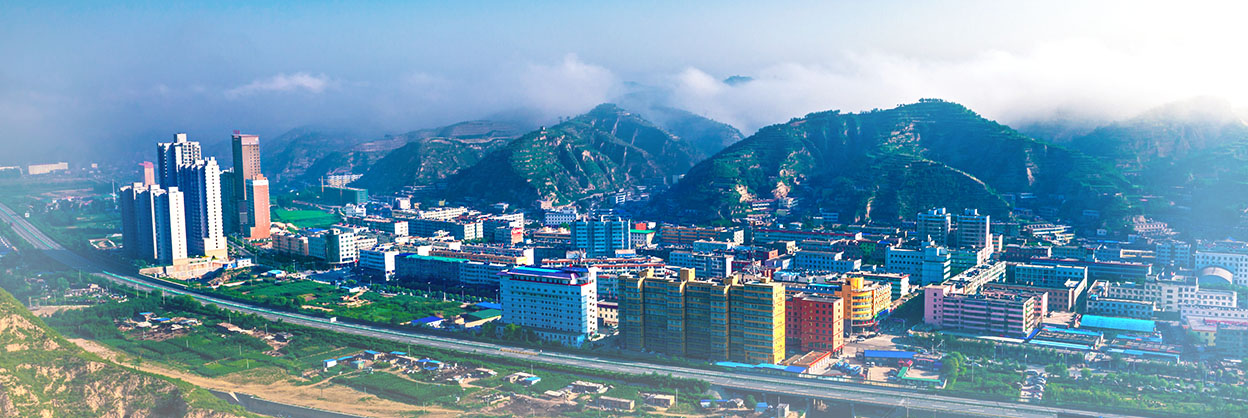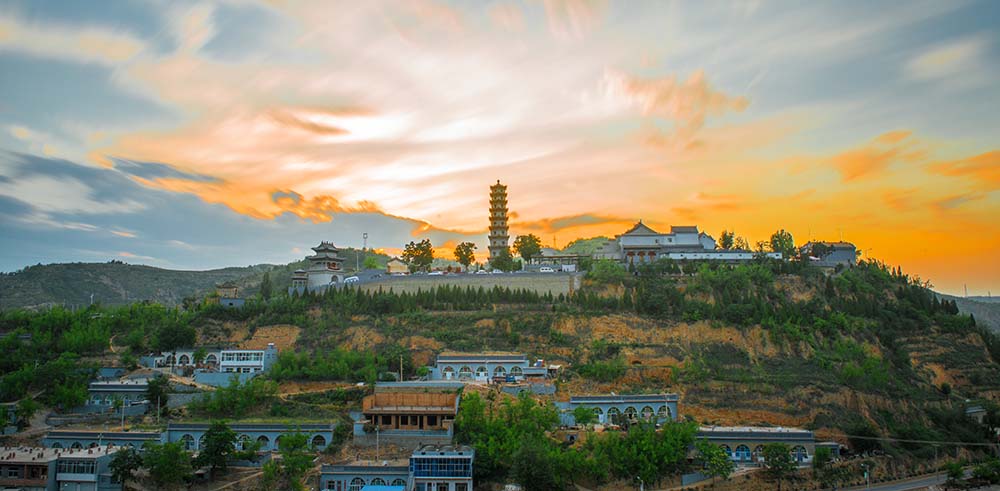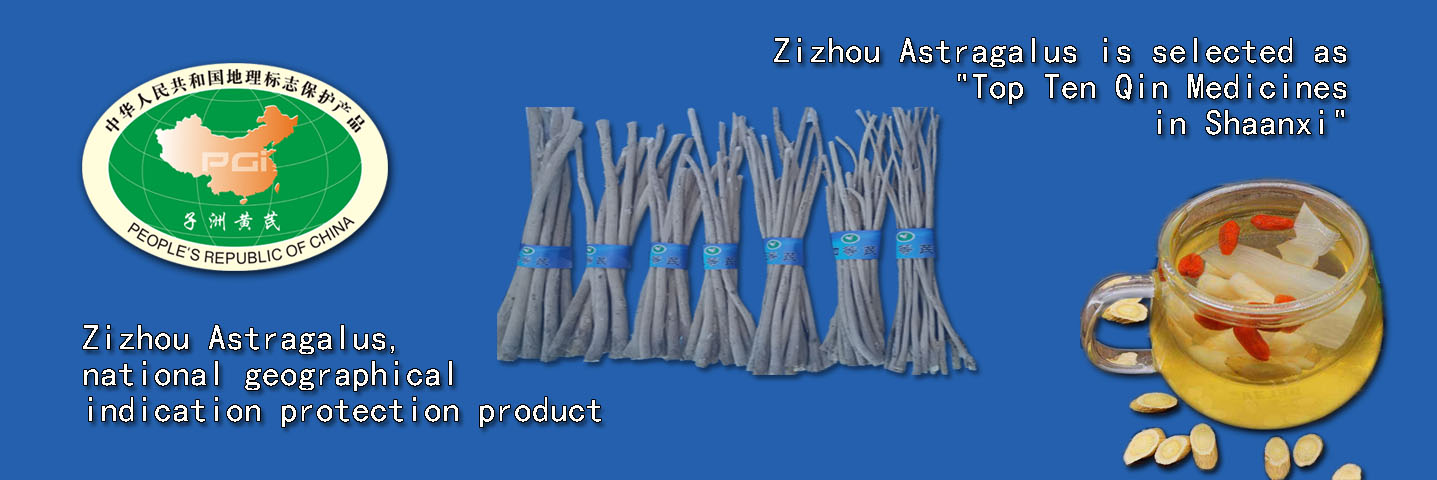Zizhou County is located in the back-land of hilly and gully region of the Loess Plateau in northern Shaanxi and in the southern rim of Yulin City. In January 1944, Suide, Mizhi, Hengshan, Qingjian and other counties were divided some parts from their counties and combined into a new county,Zizhou, which was named in memory of the revolutionary martyr Zizhou Li. The county covers an area of 2,042 square kilometers and governs 11 towns, 1 township, 1 sub-district office, and 279 administrative villages, with a total population of 302,500.

It has a long history and profound cultures. During the Xia, Shang, and Zhou periods, the county was inhabited by Chinese and other non-Chinese tribes. During the Spring and Autumn Period, Chong'er, Duke Wen of Jin, had taken refuge in Huainingchuan (anciently called Chong Erchuan) for twelve years. Stories such as Jie Zitui's cutting off his own though flesh to save life of the king and Li Guang’s shooting the tiger in the Han Dynasty all took place here. There are Dabin county, Weirong city, Linxia city, Kerong village, Mati village, Nanfeng village, Suiping village, Huaining village and other ancient villages in Dali River and Huaining River basins, and there are also ancient beacon towers, which can be seen everywhere. The loess natural dam in the territory is the mystery of the world and the wonder of the plateau. The Salt Bay of Ten Miles of Matigou town once made great contributions to the Shaanxi-Gansu-Ningxia Border Region, which enjoyed the reputation of preferring to lose Yan’an rather than lose the Salt Bay of Ten Miles. Nanfengzhai is known as the dry dock of the revolution in northern Shaanxi. In April 1928, the first congress of northern Shaanxi of the Communist Party of China was held here, establishing the special committee of northern Shaanxi and laying a solid foundation for the revolutionary base in northern Shaanxi.There are Chairman Mao’s former residences when he moved to northern Shaanxi in Qiujiaping, Gaojiata, and Xunjiansi. Matigou town was once the temporary base of the Shaanxi-Gansu-Ningxia Border Region Government. The older generation of revolutionaries, Ma Wenrui, An Ziwen, and An Zhiwen, six major generals including Wang Fuzhi, Gao Weisong, Ji Hailiang, Wang Zhenrong, Xu Zuoxu, and An Yuju and Pang Guoxing, a national fighting hero were all from this revolutionary land.A lot of great persons were born here,including Qi Chunxia, a world shooting champion, Ma Runmei, a world weightlifting champion, Jing Ruixue, a world wrestling champion, Zhang Ziliang, a film writer, as well as experts, scholars, professors, entrepreneurs and heroes from all walks of life.

It has an accumulated advantages and splendid culture. The territory is covered with undulating beams and ravines. The Dali River, Xiaoli River, and Huaining River flow through the south and west of Zizhou, nourishing the vast land and nurturing a splendid culture. Yangge dance, folk songs, suona horn, taotsing, storytelling, paper-cutting, stone carving, bread flowers are traditional excellent cultures; tarts, mooncakes, squash, stalls, miscellaneous noodles, meat pie, etc. are famous local delicacies; Xifeng Temple and Nanfeng Village are AAA-level tourist attraction; Four Famous Mountains, Buddha Hall, Jinji Mountain, with luxuriant and lush forests and grass, are green ecological sanctuaries in the countryside; the Courtyard of Liu Family is the first filial piety culture exhibition hall in the province; the eight scenic spots of Zizhou are rich in content and unique in landscape, which is a good place for tourism. There are four provincial-level cultural heritage sites and two municipal-level cultural heritage sites in the territory. Zizhou suona, Zizhou yangge dance, Zizhou tarts, and Zizhou stone carving are unique and famous. As the saying goes, "Mizhi County’s women, Suide County’s men, Qingjian County’s stone and Wayaobao's carbon", Zizhou has all of them.

It has fertile land and convenient transportation. A large number of precious dinosaur footprint fossils have been excavated in Huaishucha town, Dianshi town and other places within the territory. The Huangmao River in Tuoerxiang Town is an area rich in paleontological fossils. The mineral resources are extremely abundant, with natural gas reserves of 300 billion cubic meters, 196 natural gas wells, petroleum reserves of 13 million tons, 1,110 oil wells and coal reserves of 990 million tons; rock salt reserves are more than 400 billion tons. In addition, mineral resources such as iron, phosphorus, quartz, clay, and black jade’s reserves are considerable,with enormous exploitation potential. The territory has a long sunshine time and large temperature difference between day and night, which is suitable for the growth of grains and local fruits. There are 300,000 mu of walnuts, 220,000 mu of apples, and 200,000 mu of Chinese medicinal materials in Zizhou. Focused on the fruit industry with multiple industries simultaneously, a new pattern of green industrial circulation of miscellaneous grains, apples, walnuts, medicinal materials, forest and grass, and breeding has been formed. The Taiyuan-Zhongwei Railway, Qingdao-Yinchuan Expressway and National Road 307 pass through the territory, the county is connected to all villages, and roads extend in all directions, which makes transportation very convenient.

Zizhou astragalus has excellent quality and is well-known internationally, which is a national geographical indication protected product; Zizhou soybean is rich in soy isoflavones and protein, which is also a national geographical indication protected product. Zizhou County has been classified into the main ecological function zone of the country, which is a national model county for greening, a national sanitary county, and an advanced county in Shaanxi Province. In February 2020, the Shaanxi Provincial Government announced that Zizhou County eliminated poverty and withdrew from the poverty-stricken counties.


